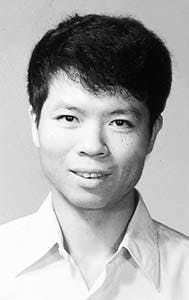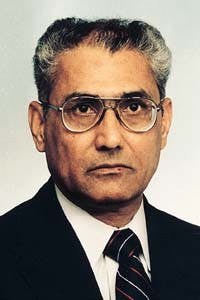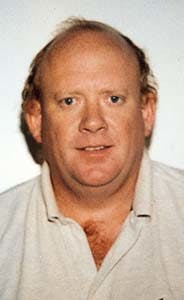Low-corrosion brine provides high-temperature completion alternative
Daniel P. Vollmer, Mingjie Ke
OSCA Inc.
Lafayette, La.Michael Darring
OSCA Inc.
New OrleansSyed A. Ali, Anthony Kenrick
Chevron USA Production Co.
New Orleans
- Cyclic Potentiodynamic Tests of 13CR at 300° F. (Fig. 2) [268,732 bytes]
- Corrosion Rates (Fig. 3) [192,591 bytes]
- Equations [24,188 bytes]
This particular brine is composed of sodium salts of carboxylic acid. It is a non-halide brine, and therefore free of the pitting-type corrosion that characterizes halide brines.
Chevron USA Production Co. operates the wells in a Viosca Knoll field.
Brines
Solids-free brines provide well control during completion and workover operations that include such procedures as:- Perforating
- Gravel packing
- Fracturing
- Leaving a weighted fluid in the tubing/casing annulus as a packer fluid.
Reservoir damage caused by drilling muds during completion operations is well documented.1-3 Because of this, solids-free brines are entering a third decade as the standard completion fluids in the oil field. However, in some instances, the most commonly available brines can cause formation damage or corrosion in well bore tubulars.
Chevron's Viosca Knoll field presents several challenges for selecting an appropriate completion brine. The field contains a limestone reservoir that produces sour gas with 0.8% CO2 at 320° F. Before the new brine, drilling mud served as the completion fluid because corrosion rates were unacceptable with standard brine.
Brine properties
The new brine fluid was developed because of the decision to complete several wells with brine while avoiding the expense of high-alloy stainless steel tubulars. 4The wells in the Viosca Knoll field have 13-chrome stainless steel tubing and C4130 carbon steel casing. Literature documents that stainless steels will stress crack when chlorides are present.5 6 Another concern was to control corrosion at 320° F. with halide salt brines, such as a chloride or bromide. Also, brines with calcium salt are known to precipitate calcium carbonate in the presence of CO2.7
The new completion fluid, composed of sodium salts of carboxylic acid with a maximum working density of 8.5-9.7 ppg, met all the criteria for this application. Fig. 1 [90,949 bytes] compares the viscosities of 9.5 ppg solutions of the new brine and a conventional sodium chloride brine. As expected, the viscosities of both solutions decrease with increasing temperature. The new brine has a higher viscosity at all temperatures. Also, the difference in viscosity decreases with increasing temperature.
Because it contains only monovalent salts, the new brine should be compatible with most formations. Its low TCT (true crystallization temperature) also permits use in cold-temperature applications, and it passes the Gulf of Mexico regulatory LC50 toxicity test (greater than 500,000 ppm for Mysid shrimp).
In preapplication testing, this brine displayed an ability to stimulate limestone formations.
Where conditions require and/or permit, the new brine can be blended with calcium-free halides or non-halides to obtain densities above 18.0 ppg. However, the corrosion properties above 9.6-18.0 ppg are only now being investigated.
Most lab tests to date have evaluated the corrosion effects of these blends on various metals with respect to temperature. TCTs and LC50 for these blends are not all available at this time.
A drill-in fluid for horizontal well applications using this brine as a base fluid is being developed.
Corrosion
Oil well tubular corrosion is a major concern with brines because brines are conductive media and promote corrosion. In most cases, corrosion can be easily reduced to acceptable levels with corrosion inhibitors.Inhibitors prevent corrosion by reducing the potential of the corrosion reaction or by removing some of the agents that initiate corrosion such as dissolved oxygen. However, as temperature increases, corrosion inhibitors often become ineffective or require high concentrations for adequate inhibition.
As an alternative, corrosion problems at high temperatures can be controlled through surface passivation. In the course of testing the new brine, it was found that in the presence of CO2 and/or H2S, this brine forms a passivated layer on carbon steel and stainless tubulars that inhibits corrosion.
In CO2 environments, Ikeda, et al.,8 recommend using 2% Cr steel at temperatures below 140° F., 9% Cr up to 212° F., and 13 Cr up to 302° F. However, most conventional completion brines contain halides that are known to cause pitting-type corrosion in some stainless CRA (corrosion resistant alloy) steels.5 As already noted, the new brine does not contain any halides, and the potential for pitting or localized-type corrosion in stainless steels is greatly reduced.
Corrosion without CO2
Localized corrosion without CO 2 was demonstrated by some quick electrochemical tests (cyclic potentiodynamic) performed according to ASTM G61. 9 These tests accelerate the pitting process or localized corrosion where it would naturally occur.The test involves the initiating of polarization at -0.25 v less than the open circuit potential (Ecorr) once the open circuit potential stabilizes to within 0.001 v for 30 sec. A stepwise potential difference is then applied between the 13 Cr and a platinum electrode while the current is measured.
For a quick determination, this method is preferred over long-term general static weight-loss tests because pitting corrosion may take years to form. However, once a pit forms, a tubing failure may occur in only a few weeks.
Figs. 2a and 2b show the susceptibility to localized attack of 13 Cr at 300° F. in both a 9.5 ppg NaCl and NaBr brine. Epit is defined as the pitting potential, or the potential when the metal suffers localized attack. Eprot is the potential where the metal stops suffering from localized attack and repassivates.
When Eprot is less than Ecorr (Fig. 2a), the metal will suffer localized attack in service. Fig. 2b shows analogous results for a 9.5 ppg NaBr solution. Note that in Fig. 2b the difference between Eprot and Ecorr is much greater than that in the NaCl solution. Because Epit equals Ecorr (Fig. 2b), this indicates that 13 Cr has more localized corrosion in a 9.5 ppg NaBr than in a 9.5 ppg NaCl.
After the tests, both coupons showed evidence of pitting and localized corrosion, but the coupon in the 9.5 ppg NaBr solution showed more localized attack. Beavers, et al.,10 also notes this observation.
For these tests, the autoclave was pressurized with nitrogen, and the fluid was not de-aerated or purged with air.
Fig. 2c shows the cyclic potentiodynamic tests for the new brine system under the same conditions as the halide brines. Because Epit is less than Eprot, localized corrosion under these conditions should not occur in service.11
The uniform corrosion rate was calculated to be 8.0 mills/year (mpy) with the Tafel extrapolation. The large increase in current at about 0.9 v is not the pitting potential in this case (post pits on the coupon did not occur). The current increase is probably due to the electrolysis of water.
Fig. 2d shows the cyclic potentiodynamic of a 10.5 ppg mixture of the new brine and NaBr that was prepared by mixing a 9.5 ppg solution of the new system and 12.5 ppg NaBr. A test with a 10.5 ppg NaBr solution resulted in a plot nearly identical to that obtained for the 9.5 ppg NaBr.
The effect of the new system caused the 13 Cr to be more resistant to pitting and localized corrosion, as indicated by an Eprot > Ecorr. Whether localized corrosion will occur in service is uncertain, and a long-term static weight-loss test would need to be performed.
Polarization tests were done on C4130 steel in the new brine system at temperatures up to 300° F. With the Tafel extrapolation, the corrosion rates were calculated to be less than 10 mpy at all tested temperatures. Static general weight-loss tests confirmed these results. These tests also confirmed the absence of pitting corrosion.
Corrosion with CO2
The literature contains numerous examples of CO 2 corrosion. However, most references studied CO 2 corrosion in flowing pipelines or in flowing wells, but not CO 2 corrosion effects with brines used as packer fluids.De Waard and Lotz12 developed an empirical equation (Equation 1 in equation box [24,188 bytes]) to model CO2 corrosion in pipelines. Equation 2 incorporates the iron carbonate scale produced during the corrosion process. These equations are based on weight-loss tests in a stirred autoclave using 0.1% NaCl.
The nomenclature is as follows:
- CR = Corrosion rate, mpy
- t = Temperature, °F.
- pCO2 = CO2 partial pressure.
Fig. 3a illustrates the severity of CO2 corrosion when these equations are plotted at a 750 psig CO2 pressure. The equation predicts a maximum corrosion rate of 1,080 mpy at 100° F. that decreases with temperature due to the scaling effect (passivation) produced on the surface of the metal.
Tafel plots (Fig. 3a) were done to calculate the corrosion rate for C4130 carbon steel in a 9.5 ppg NaCl and a 9.5 ppg solution of the test brine. These tests involved bubbling CO2 in the solution until saturation was obtained, as indicated by a stabilization of pH over 15 min. Then 500 psig was applied. When the desired temperature was obtained, the pressure was increased to 750 psig.
The 9.5 ppg NaCl solution shows lower corrosion rates than predicted up to about 175° F. This is due to less CO2 dissolving in the brine, as opposed to 0.1% NaCl. However, the corrosion rate begins to increase above 600 mpy at 200-300° F. due to the chloride ion destabilizing the protecting iron carbonate film.
The new brine system seems to follow Equations 1 and 2 but at much lower magnitudes. Fig. 3a shows that the corrosion rate is reduced to less than 20 mpy at all temperatures, with a maximum corrosion rate between 100 and 200° F. This reduced corrosion rate is believed to be caused by two mechanisms:
- Reduction of the CO2 solubility in the water phase
- Formation of a protective iron carbonate scale.
To determine CO2 effects on 13 Cr, a cyclic polarization test (Fig. 2e) was done with 9.5 ppg NaCl at 750 psig at 300° F. With CO2, Eprot became greater than Ecorr, whereas without CO2, Eprot was less than Ecorr (Fig. 2a). This suggests that the metal could be susceptible to localized corrosion; however, with a uniform corrosion rate of 171 mpy, an NaCl completion brine is unacceptable. To confirm that the metal would suffer localized corrosion, long-term static weight-loss tests would be needed.
This test was repeated using a 9.5 ppg test brine solution and showed no indication that the metal would suffer localized corrosion. The uniform corrosion rate was less than 20 mpy.
Viosca Knoll stream
Long-term general weight-loss tests used a simulated Viosca Knoll production stream. Fig. 3b shows the typical corrosion rate change with time of 13 Cr in the simulated Viosca Knoll production stream at 320° F., with 300 psig CO 2 and 35 ppm H 2S. The ratio of brine volume to metal area was identical to actual well conditions.Fig. 3b indicates that with time, the corrosion decreases due to the continuing passivation reaction on the tubular surface. After 30 days, the corrosion rate had decreased to almost 1 mpy.
To illustrate the passivation rate of the test brine system, a series of 7-day tests were run at different temperatures on C4130 steel (Fig. 3c). The surface passivation rate increases with temperature; however, the rate at which the corrosion decreases is almost linear, and appears to be zero at 320° F.
Because the salt and the passivation agent are the same, it is conceivable that complete coverage is possible. The time needed for complete passivation increases with decreasing temperature. In fact, the presence of CO2 appears to accelerate the completeness of this reaction, indicating a desirable synergistic effect.
Other brine systems often have the reverse effect, prompting the need for increased corrosion inhibitor loading and perhaps CO2 scavengers.
Formation damage
Core flow studies at 318° F. showed that a Viosca Knoll core contained mostly calcium carbonate. An initial 5.35 md apparent permeability was obtained with 3% KCl.A 9.5 ppg test brine solution was injected into the core until the flow rate stabilized. The core was allowed to soak for 16 hr before the test brine was displaced with 3% KCl.
The reverse KCl flow indicated that the apparent core permeability to liquid had increased to 11.5 md. Increases in apparent permeability of 180% to 210% were also seen when this test was repeated on different core sections at 250° F. and 320° F.
When compared to freshwater, salts of carboxylate brines can increase the solubility of scales containing alkali earth metal sulfates and carbonates.13 Inductively coupled plasma (ICP) analysis determined the calcium carbonate solubility in the test brine at 320° F.
The analysis involved stirring an excess amount of calcium carbonate in 9.5 ppg test brine under pressure for 1 hr. Then at 320° F., the excess calcium carbonate was filtered and the filtrate collected. A few drops of concentrated HCl added to the filtrate dissolved any calcium carbonate that may have precipitated while cooling.
The test was duplicated using deionized water in the place of the test brine.
In deionized water, CaCO3 was determined to be 0.0025% soluble, and in the test brine, 0.013% soluble. This could explain the apparent stimulation effects seen in the core flow studies discussed earlier.
Acknowledgments
The authors thank the following persons for their help with this article: Ronald Coats, Rachal David, Robert Horton, and Ryan Miller. We also thank the management of OSCA and Chevron for granting their permission to publish this article.References
- Baijal, S.K., Houchin, L.R., and Bridges, K.L., "A Practical Approach to Prevent Formation Damage by High Density Brines During the Completion Process," Paper No. SPE 21674, 1991.
- Houchin, L.R., Baijal, S.K., and Foxenberg, W.E., "An Analysis of Formation Damage by Completion Fluids at High Temperatures," Paper No. SPE 23143, 1991.
- Paul, J.R., and Plonka, J.H., "Solids Free Completion Fluids Maintain Formation Permeability," Paper No. SPE 4655, 1973.
- Vollmer, D.P., and Horton, R.L., "Novel Alkali-Based Completion Fluid," patent applied for, 1997.
- Fontana, M.G., and Greene, N.D. Corrosion Engineering, McGraw-Hill, 1967.
- Treseder, R.S., "Oil Industry Experience with Hydrogen Embrittlement and Stress Corrosion Cracking," Stress Corrosion Cracking and Hydrogen Embrittlement of Iron Base Alloys, Staehie, R.W., Hochmann, J., McCright, R.D., and Slater, J. E. (eds.), National Association of Corrosion Engineers, Houston, 1977.
- Shaughnessy, C.M., and Kline, W.E., "EDTA Removes Formation Damage at Prudhoe Bay," Paper No. SPE 11188, 1982.
- Ikeda, A., Ueda, M., and Mukai, S., "CO2 Corrosion Behavior and Mechanism of Carbon Steel and Alloy Steel," Paper No. 45, Corrosion 83, Anaheim, Calif., 1983.
- ASTM G61-86. "Conducting Cyclic Potentiodynamic Polarization Measurements for Localized Corrosion Susceptibility of Iron, Nickel, or Cobalt Based Alloys," American Society for Testing and Materials.
- Beavers, J.A., Durr, C.L., and Thompson, N.G., "Unique Interpretations of Potentiodynamic Polarization Technique," Paper No. 300, Corrosion 98, 1998.
- EG&G Princeton Applied Research, "Electrochemistry and Corrosion Overview and Techniques," Application Note Corr-4.
- De Waard, C., and Lotz, U., "Prediction of CO2 Corrosion of Carbon Steel," Paper No. 69, Corrosion 93, New Orleans, 1993.
- Downs, J.D., and Baak, A., "The Chemical Dissolution of Alkali Earth Metal Sulfates in Potassium Formate Brine," unpublished report.
The Authors
Daniel P Vollmer is a research scientist at OSCA Inc., Lafayette, La. He is responsible for developing drilling and completion fluid systems. Vollmer has BS and MS degrees in chemical engineering from the University of Southwestern Louisiana.
Michael Darring is senior sales representative for OSCA in New Orleans. He has 22 years' experience in oil and gas well completion operations and design, specializing in sand control, sandstone stimulation, and formation damage control. Darring has a BA from the University of Tennessee.
Mingjie Ke is an engineer in the technical services department at OSCA, in Lafayette. His expertise covers formation damage control, corrosion control and well stimulation. Ke holds a BS in chemical engineering from Fuzhou University in China, and an MS in chemical engineering from Lamar University.
Syed A. Ali is technical advisor for Chevron U.S.A.Production Co., New Orleans. He specializes in sandstone acidizing, formation damage control, rock-fluid interaction, mineralogy, and oil field chemistry. Ali has an MS from Ohio State University and a Phd from Rensselaer Polytechnic Institute.
Anthony Kenrick is the operations supervisor for Chevron U.S.A. Production Co's Mobile and Viosca Knoll natural gas fields. He previously worked as a completion and production engineer. Kenrick has a BS and an MS in petroleum engineering from the University of Texas. He is a registered professional engineer in Texas.
Copyright 1998 Oil & Gas Journal. All Rights Reserved.





